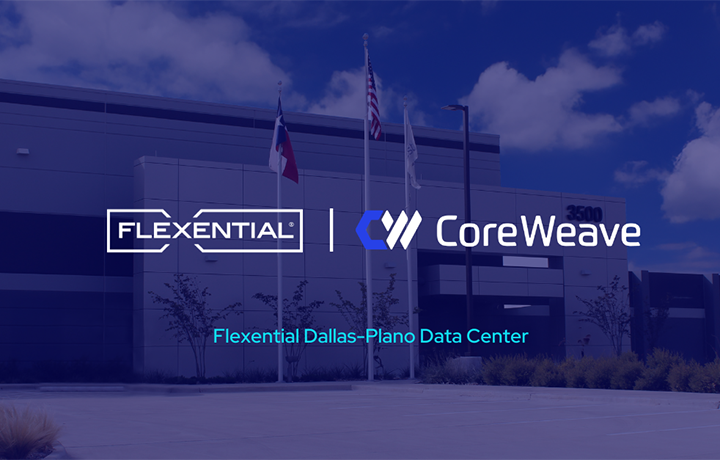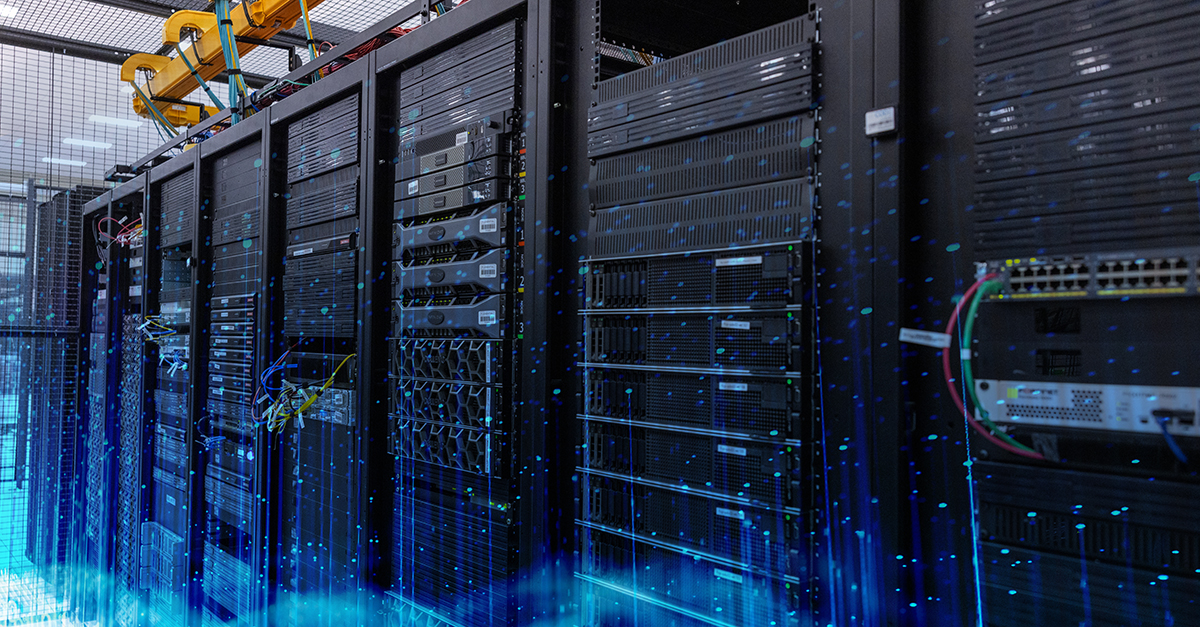Architecting the future: Rethinking IT infrastructure in the age of AI
The rapid evolution of IT infrastructure in the age of AI and digital transformation demands a fresh perspective from IT leaders.

Fresh insights from the 2025 State of AI Infrastructure Report
AI adoption is evolving fast—are you keeping up?
According to our latest research, C-suite leadership driving AI initiatives jumped from 53% to 81% year-over-year, signaling a massive shift in enterprise commitment. That’s just one of many standout findings in the newly released 2025 State of AI Infrastructure Report.
Explore how trends in adoption, scalability, network constraints, and sustainability have shifted since last year—and what that means for your digital strategy.
Get the latest data and see how your organization stacks up.
Interconnected ecosystems are vital for optimizing AI workloads, enhancing operational efficiency, and fostering innovation. Drawing on insights from our 2024 State of AI Infrastructure Report, we'll provide a data-driven perspective on why businesses must prioritize these interconnected ecosystems. Whether you're a tech leader, a business strategist, or simply curious about the future of digital collaboration, this blog will offer valuable insights into why interconnected ecosystems are so crucial and how they benefit enterprises.
As AI accelerates change and innovation, reimagining infrastructure strategies becomes crucial for achieving ambitious business goals. To access the right partner ecosystems and integrate essential digital building blocks, it's imperative to rethink how infrastructure is architected, created, and consumed.
The current landscape of IT infrastructure
Traditionally, IT infrastructure has been built with a focus on stability and control. However, the increasing demands of AI and digital transformation are exposing significant challenges in scalability, security, and integration. According to the 2024 State of AI Infrastructure Report, many IT leaders are finding their existing infrastructure insufficient to meet some of these new demands.
The report highlights several critical issues:
Security and data privacy concerns: Data privacy and security are major concerns for organizations deploying AI. 42% of respondents reported pulling back AI workloads from public clouds to private or third-party data centers due to data privacy and security issues. This shift underscores the need for more secure infrastructure solutions.
Performance issues: A significant number of organizations (82%) have encountered performance issues with their AI workloads over the past year. Common problems include bandwidth shortages (43%), unreliable connections (41%), and difficulty scaling data center space and power to meet AI workload requirements (34%).
Pressure to minimize time-to-revenue: Nearly all respondents (93%) agreed that there is a greater expectation for IT leaders to minimize time-to-revenue for AI-driven IT infrastructure compared to five years ago. This pressure adds to the urgency of addressing infrastructure inadequacies.
C-Suite disconnection: Adding to the complexity, there is often a disconnect between C-suite executives and the on-ground realities of AI infrastructure challenges. For instance, 33% of C-suite respondents reported no AI performance issues in the past 12 months, compared to only 19% of directors and 8% of VPs, indicating a gap in awareness and understanding.
Key findings from the 2024 State of AI Report
Obviously, AI is reshaping infrastructure needs, driving organizations to invest in new technologies and strategies. The report highlights that while experimentation is common, it alone is not enough. Organizations must adopt a more strategic and proactive approach to AI workload deployment, leveraging third-party expertise to fully harness AI's potential. The conclusion emphasizes the necessity of leveling up IT infrastructure to match AI ambitions and vision.
Survey data from the report reveals several insights:
- 59% of respondents identified increasing infrastructure investments as a key element of their AI roadmap. This reflects the growing recognition of the need for robust, scalable infrastructure to support AI initiatives.
- 53% of respondents reported experiencing skills gaps or staffing shortages related to the management of specialized computing infrastructure. This shortage hampers the ability to effectively support and maintain AI-driven environments.
- 51% are using third-party colocation data centers to process data closer to the edge of the network, highlighting the need for low-latency, high-performance infrastructure solutions.
These findings underline the importance of rethinking infrastructure strategies to accommodate the unique demands of AI.
Reimagining IT infrastructure
Modern IT infrastructure must be flexible, scalable, secure, and highly interconnected. The essential components include:
Flexibility and scalability
Infrastructure must support rapid scaling to accommodate AI workloads. Leveraging cloud services and colocation can provide the necessary flexibility, and organizations must source high-density compute capacity that can scale with AI workloads while integrating new tools and technologies as needs evolve. Additionally, shifting compute and data storage to the edge of the network inherently minimizes latency and improves performance, making infrastructure more efficient and cost-effective.
Security and compliance
As AI increases the amount of sensitive data processed, robust security measures are essential. The management of complex hybrid infrastructures must include comprehensive cybersecurity strategies. Nearly all respondents in the report agreed that increasing investment in AI has also increased their vulnerability to cyber threats, emphasizing the importance of securing sensitive data throughout the entire IT architecture. Organizations must ensure compliance with ever-evolving privacy rules and regulations.
Interconnectivity and integration
Seamless integration with existing systems and partner ecosystems is crucial. The future-proofing of IT infrastructure involves ensuring compatibility and efficient data flow across all components. Many organizations are leveraging colocation to meet AI infrastructure challenges, but there is room for additional optimization. Strategic decision-making about where to deploy AI workloads is vital for optimizing cost efficiency, security, and performance.
Effective management
Understanding the fundamentals of IT infrastructure management is critical for building a robust and efficient system. For a comprehensive overview, read more about what IT infrastructure management entails. The report highlights the necessity for IT leaders to adopt a more strategic and proactive approach to AI workload deployment, leveraging third-party expertise to fully harness AI's potential.
Leveraging partner ecosystems
Integrating with the right partner’s ecosystems is vital for modern IT infrastructure. Flexential offers comprehensive solutions, including:
- Colocation: Flexential colocation services provide secure, scalable environments for your critical IT assets. With facilities designed to support high-density power and cooling requirements, you can ensure optimal performance for AI and other demanding workloads. Our colocation solutions also include robust physical security and compliance measures, ensuring that your data and systems are protected.
- Cloud services: Flexential cloud services offer hybrid and multi-cloud solutions tailored to your specific needs. Our cloud infrastructure is built for flexibility, allowing seamless integration with existing systems and enabling rapid scalability to meet changing demands. These services support various deployment models, including private, public, and hybrid clouds, to provide the right balance of performance, security, and cost-efficiency.
- Data protection: We provide robust data protection services, including backup, disaster recovery, and security solutions. These services ensure that your data is safeguarded against threats and can be quickly restored in case of disruptions, maintaining business continuity. Our data protection solutions are designed to meet compliance requirements and protect against data loss and cyber threats.
- Interconnection: Efficient data exchange between IT infrastructure and partner ecosystems is crucial. Our high-speed connectivity solutions reduce latency and enhance performance, supporting real-time data processing and collaboration. With options for direct cloud connectivity, carrier-neutral facilities, and flexible networking solutions, Flexential ensures that your infrastructure remains agile and responsive to business needs.
These solutions help organizations manage their IT infrastructure more effectively, as discussed in the blog on reshaping your approach to digital infrastructure.
Charting a path forward
The pace of AI-driven change necessitates a reimagining of IT infrastructure. Investing in flexible, scalable, secure, and interconnected systems, along with leveraging third-party expertise and solutions, enables organizations to meet their ambitious AI goals and drive business success.
To learn more about our solutions, visit our Flexential products and services page.







